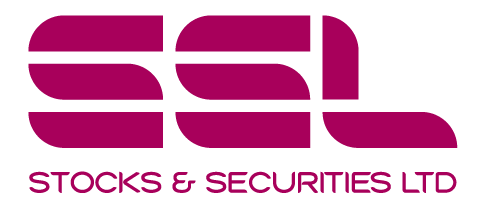Investors, usually those with considerable wealth and experience, have ready access to loan capital through a practice known as securities-backed lending.
Whether through a private bank or other financial institution, securities-backed loans and lines of credit can be particularly useful for those engaging in large purchases from time to time, such as buying real estate properties or acquiring private operating companies.
Securities-backed lending, also known as securities-based lending, instead uses the securities as collateral to secure loans to investors.
What Is a Securities-Backed Loan?
A securities-backed loan is a debt collateralised by an investor’s portfolio of eligible securities such as stocks and bonds. The borrower deposits securities into an account on which the lender has a lien, and the lender will often make available loan funds ranging from 50 per cent to 95 per cent of the securities’ market value. The exact amount depends upon the specific underlying assets in the portfolio and the level of diversification. For example, a lender might approve more funding against a portfolio of U.S. Treasury notes than a portfolio that holds a single, concentrated stock position.
The Lending Process in Action
When the borrower wishes to access the loan funds, he or she writes a check against the line of credit or submits instructions to wire funds to a bank account. As the value of the underlying collateral changes, the credit capacity of the account fluctuates, which may make it necessary to deposit additional collateral either in the form of cash or by depositing other stocks and bonds previously not included in the collateral.
The borrower may also repay some or all of the outstanding loan balance. If not done within a specified period known as a “cure period,” which could range from two days up to 30 days, the lender will liquidate the securities that act as collateral by selling them.
Eligible borrowers can include individuals, joint investors, and revocable living trusts in which the trustee, trustor, and beneficiary are identical. Depending upon the financial institution, loans can range from $100,000 to $5,000,000 or possibly more for very high-net-worth individuals. These loans have terms that are tailored to the borrower with short and intermediate durations; five years is standard.
Benefits for Investors
Securities-backed lending has several advantages. They can offer the borrower substantially lower interest rates and reduced risk relative to alternatives like a margin loan, although they still contain greater risk than other forms of lending. Additionally, they offer greater flexibility in repayment and provide a cure period to meet demands for additional collateral. This differs from the immediacy requirement for paying back a margin loan.
This spread varies but, typically, the larger an investor’s portfolio value, the lower the interest rate. In some instances, a lender may lower the interest rate on a securities-backed loan if allowed to place an “abundance of caution” lien on an investor’s real estate property or properties. This may also allow the investor to deduct the loan’s interest on her tax return. Some securities-backed loans also offer an interest-only payment feature.
The Risky Business of Securities-Backed Loans
Despite their advantages, securities-backed loans come with specific risks. Even a stable company with historical stock-price stability can succumb to a challenging economic environment and see its share price tumble.
When equity and fixed-income markets perform poorly, which typically happens in cycles, the market value of many assets can hit levels previously unthinkable.
Unless the borrower has a lot of surplus liquidity outside of the securities backing the loan, or the securities supporting the loan consist almost entirely of assets such as short-term U.S. Treasury bills, this can result in the bank calling in the investor’s collateral. This could trigger forced liquidation of the borrower’s holdings at unattractive prices. The borrower has now had the option to buy and hold taken away from him, and he doesn’t have the choice of waiting for the market to recover.
Another danger with securities-backed loans is that the lender may no longer feel comfortable with specific security serving as collateral. For example, imagine that you hold a large block of stock in what was formerly a well-respected company, such as Eastman Kodak. As digital cameras eroded the company’s profits, the bank may have decided that it would no longer accept Eastman Kodak as collateral.
You would have had to either sell your Eastman Kodak shares and invest the money in something that was acceptable for the lender’s collateral needs, or you would have needed to contribute additional capital to the secured account that held your collateral to avoid having your line of credit reduced or cancelled. To mitigate other types of risk, securities-backed loans also have an important restriction: The borrower cannot use the money to pay down margin debt or to invest in other securities.
If you liked this article and want to read other great stories, try our Archives. Also if you are new to investing you can try our Investment Basics Blog.
If you want to start investing with SSL but don’t have the time to monitor the market or to conduct the trades yourself then you can choose one of SSL’s managed Financial Planning products. We offer a variety of products for every type of investor and if you are interested in managing online trades yourself and having complete control over your investment portfolio then you can try SSL’s Brokerage account.
Follow us on Facebook, LinkedIn and Twitter please leave us a review.


